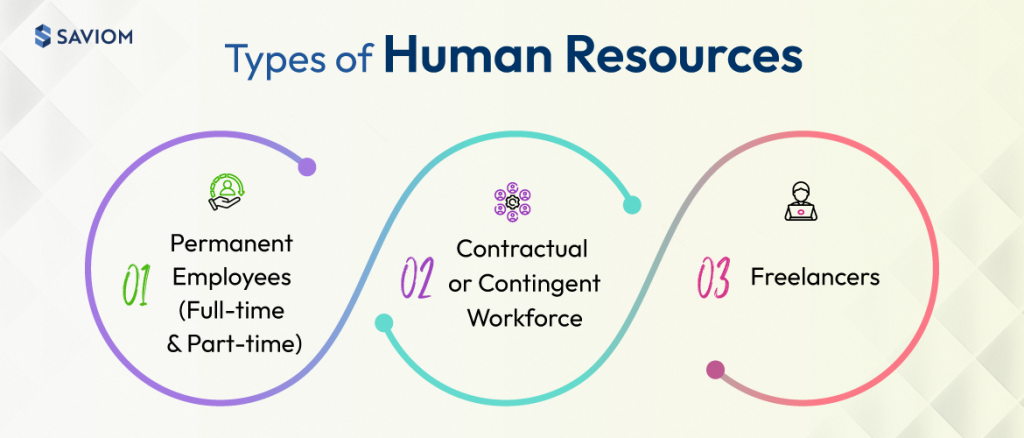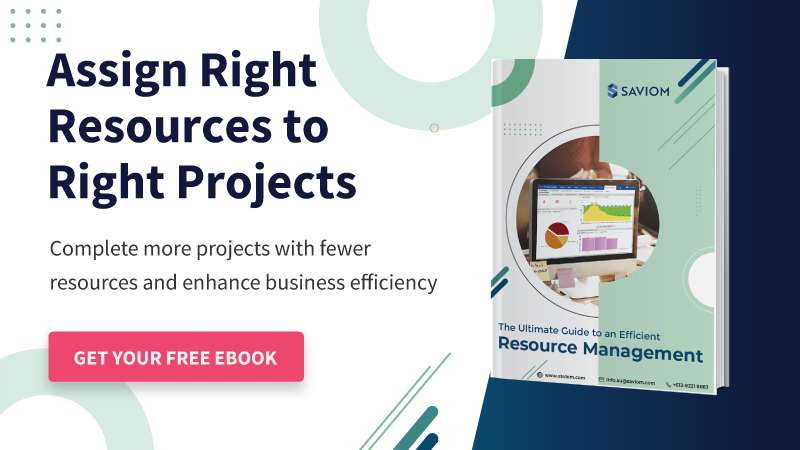Resource planning across multiple projects is a critical endeavor for any organization aiming for efficiency, productivity, and business success.
However, according to a study by RGPM, “59% of project managers who run two to five projects simultaneously struggle to manage resources effectively.”
That means, from allocating resources to ensuring the availability of essential tools and materials, resource planning becomes a complex puzzle that requires careful consideration and foresight.
Therefore, firms must implement effective resource planning strategies in multi-project environments. This approach optimizes workforce utilization, improves project quality, reduces costs, and ensures the timely delivery of projects.
In this article, we will discuss how to implement resource planning across multiple projects seamlessly.
Let’s begin!
Importance of Resource Planning Across Multiple Projects
Formulating an intelligent project plan requires accurate information on every workforce attribute, from skills and core competencies to their utilization and availability. These insights allow managers to develop a high-level resource plan within the allocated project budget.
It also helps them enhance productivity and ensure the project’s success by facilitating the appropriate allocation of the right resources to the right projects in the right capacities.
Helps Forward Plan for Future Projects
Resource planning helps managers forward plan resource requirements for projects that have reached a certain stage of probability. It enables them to ensure that competent resources are available for timely project initiation. Furthermore, it provides sufficient time to initiate training or hiring activities to acquire necessary professionals, preventing last-minute firefighting. Therefore, it minimizes the possibility of project delays, compromised resource quality, and unnecessary cost escalations.
Read More: What is Resource Forecasting? An Ultimate Guide for Project Managers
Ensures Competent Resource Allocation
It facilitates the competent allocation of resources based on skills, experience, qualifications, costs, interests, etc. Assigning resources to projects that align with their skills and expertise enhances work quality, reduces the likelihood of errors, and expedites task completion. Furthermore, resource planning allows firms to leverage cost-effective global resources to control project costs.
Maximizes Profitable Resource Utilization
Through effective resource planning, managers can establish utilization targets for resources and monitor them in real-time. This enables them to promptly recognize instances of under/overutilization and mitigate it using different optimization strategies. This helps maintain even workload distribution and minimize the risk of disengagement or burnout. Additionally, they can allocate underutilized resources to pipeline or strategic projects, maximizing their productivity and overall profitability.
Enables Timely Project Delivery
Proactive resource planning in project management empowers managers to anticipate and address capacity vs. demand discrepancies ahead of time by implementing necessary measures to bridge the gap. This ensures that skilled resources are available well in advance and are allocated according to the project requirements. Consequently, projects commence on schedule and are successfully delivered on time.
Improves Client Satisfaction
Client satisfaction hinges on the organization’s ability to effectively fulfill their expectations. Efficient resource planning enables businesses to assign the right resources to the right projects, ensuring timely delivery within the pre-defined budget. It enhances the organization’s return on investment (ROI) and strengthens their brand reputation in the market.
Now that you’ve understood the essential benefits of planning resources effectively, let’s learn about the various types of projects and resources:
How are Projects and Resources Classified?
To create an effective resource plan, it is crucial for managers to understand the different types of human resources available within the firm.
Types of Human Resources
Depending on the project requirements, the manager hires different types of resources, such as permanent employees, contractors, or freelancers.
Permanent Employees (Full-time & Part-time)
Permanent employees can be full-time and part-time resources and are often perceived as a cost-effective solution for any business. In addition, their productivity and contribution to meeting business objectives are higher due to their participation in any or all of the internal and strategic works.
Contractual or Contingent Workforce
On-demand or contingent workforce is beneficial for businesses facing workload volatility due to changes in market conditions. They are considered helpful for short-term assignments as they entail lower overhead costs than full-time resources. Often the project managers utilize contractual resources at a higher price but have no liability to maintain them once the task is accomplished.
Freelancers
Freelancers are hired for a specific time period, and they have more flexible work schedules. They are usually employed for projects with niche skill requirements at hourly or daily rates. Moreover, hiring freelancers is a cost-cutting strategy many businesses use to trim down training and other overhead expenditures.
Read more: What is a Contingent Workforce and Why an Organization Needs It
Now, let’s read about the various resources in a matrix firm.
Workforce in a Matrix Organization
In a matrix organizational structure, employees have more than one line of reporting managers. This structure offers greater flexibility as resources with varying expertise can work across different departments and projects within the organization.
Below is the resource classification in matrix organizations:
Local Resources
A local resource is limited to a specific location within the local infrastructure of the project. These resources have the advantage of being in proximity to the business, and they can build a better relationship with the key personnel of the client organization.
Global Resources
Global resources transcend the project’s operational boundaries and can be accessed from multiple locations through a centralized resource management system. Utilizing these resources allows organizations to tap into top-notch talent at affordable rates.
Project managers use the nearshore and offshore outsourcing model to leverage the expertise of global resources for any project.
Nearshore Model:
This outsourcing model refers to the resources in neighboring countries with similar time zones. As an example, the nearshore location for the US would be Mexico.
Offshore Model:
The offshoring model refers to outsourcing to resources located far away with considerable time zone differences. An example of an offshore location for the US would be India.
Read more: Resource Management: A Comprehensive Handbook for Project Managers
Different Types of Projects
Understanding the various types of projects is essential for planning and scheduling the right resources for the right task. The project type is determined by parameters such as cost, duration, resource requirements, complexities, etc.
So, let’s understand the two different project types:
Small Scale Project
A small-scale project is characterized by factors such as short duration, a small team, and a modest budget. Given its scale and complexity, a single project manager can handle one or more such projects simultaneously. Here, resources are assigned for multiple tasks to deliver outputs quickly and economically.
Large Scale Project
Large-scale projects, on the other hand, are characterized by the complex nature of the deliverables, longer duration, larger teams, and a bigger budget. As a result, multiple project managers are required to manage these projects, and they are supervised by the Delivery Project Executive (DPE).
Read more: Project Resource Management: An Ultimate Guide on How to Master it
Now, let’s understand the roadblocks of resource planning across multiple projects.
Challenges of Resource Planning Across Multiple Projects
Enlisted below are the challenges of managing resources across multiple projects.
A Traditional Resource Requisition Protocol
The traditional resource-requesting method brings in a lot of complexity and challenges in the form of double booking, internal conflicts, discrepancies, etc. In addition, it involves endless calls/email requests from multiple project managers and manual identification of resources from internal channels, which is time-consuming and cumbersome. Therefore, such protocols delay the scheduling process and impede project schedules.
Read more: 6 Easy Steps to Request Resources Efficiently
Poor Visibility Due to Siloed Data
The use of legacy tools and silos of spreadsheets within organizations results in poor visibility and a lack of real-time updates. As a result, managers often allocate resources without looking into their competencies and existing bookings. This improper resource allocation leads to skill mismatches, double bookings, and over-utilization, thereby compromising project quality.
Unable to Forecast Demand vs. Capacity
When managers do not foresee future project resource requirements, they are unable to conduct capacity versus demand gap analysis well in advance. Consequently, they fail to acquire the necessary resources required to start the project. This results in last-minute firefighting for resources and costly hirings, leading to schedule/budget overruns.
Read More: What is Resource Capacity Planning? An Ultimate Guide for Every Project Manager
Shortage of Resources Within a Multi-project Environment
Managing a shortage of resources in a multi-project environment poses significant challenges for organizations. When multiple projects are running concurrently, the demand for skilled resources often exceeds supply, leading to potential delays and compromised quality. This scarcity can result in overworked employees, reduced productivity, and increased stress levels, further impacting project timelines and outcomes.
Lack of Productive Utilization of Resources
Planning and scheduling competent resources to non-billable and mundane tasks can reduce their productivity levels and lower their morale. In addition, without the right resource planning tools, project managers fail to track real-time utilization levels and take appropriate measures resulting in suboptimal utilization of resources. This can further cause project delays, resulting in revenue loss, and a decline in employee satisfaction.
Rise of Internal Conflicts between Multiple Projects
Often, multiple projects require the same competencies at the same time. This fuels resource competition, creating disagreement between project managers. Besides, internal conflicts can also arise due to differences in needs, resource schedules, project priorities, etc.
Read more: How to Manage Resources in Agile Project Management?
These are some of the challenges that lead to ineffective resource planning. Now let’s look into some of the best ways to manage resources across multiple projects efficiently.
Strategies for Effective Resource Planning Across Multiple Projects
A well-structured resource plan helps in balancing workloads, optimizing resource utilization, and preventing bottlenecks. Thus, it plays a vital role in the successful completion of all projects.
Here are some proven strategies that will help create a proper resource plan:
Prioritize Projects & Tasks
To ensure effective resource planning across multiple projects, firms must prioritize projects and tasks based on strategic importance and urgency. For this, managers should conduct a thorough assessment to identify critical projects and prioritize them accordingly. This involves considering factors such as project deadlines, client requirements, higher ROI, etc.
By establishing clear priorities, managers can focus their efforts on high-impact initiatives, ensuring that limited resources are allocated where they can deliver the most value. Additionally, breaking down projects into smaller, manageable tasks allows for better resource allocation and monitoring, enabling teams to stay on track and meet project objectives efficiently.
Gain 360-Degree Visibility of All Resource Profiles
For resource planning across multiple projects, it is important to obtain a clear visibility of the talent pool across the organization. A multi-dimensional resource scheduler facilitates identifying and allocating appropriate resources to the right project at the right time.
With a unified Gantt chart view of the enterprise, it offers 360-degree visibility into all resource profiles like availability, capacity, cost, skills, and schedules. This helps managers deploy the resources to various projects based on their skills and availability, ensuring competent allocation. As a result, it improves resources productivity levels and their performance, ensuring delivery of quality work within time and budget.
Read more: What is Resource Planning and Why is it Important?
Bridge Capacity vs. Demand Gap in Advance
For resource planning, it is essential to understand the various pipeline project requirements and identify excess or shortage of resources. This will help managers implement course corrective measures to bridge the gap. First, if there is an excess of resources, managers can bring forward project timelines or sell additional capacity.
Alternatively, a shortfall of resources can be mitigated by bringing in employees from other departments or implementing training and upskilling. Further, it will enable them to conduct planned hiring, eliminating the hassle of last-minute hiring. As a result, the right resources are available before the project’s onset, ensuring its timely delivery.
Distribute Key Resources Uniformly Across Projects
Efficient resource planning will ensure that no resource is under or over-utilized against their available capacity. To optimize the workforce’s utilization levels and distribute them equally across every project, managers can use resource leveling and smoothing techniques. Resource leveling involves adjusting project schedules to eliminate peaks and troughs in resource demand, ensuring a steady allocation of resources over time.
It aims to prevent overloading of workforce during busy periods and underutilization during slack periods, Conversely, smoothing focuses on redistributing resource assignments within the constraints of project schedules while keeping the demand within predetermined limits. It helps in maintaining a consistent workload for resources without altering the project’s critical path or completion date.
Read more: How to Track Resource Utilization?
Enable Out Rotation and Backfill Strategy
Resource planning enables managers to out-rotate an internal niche skilled resource from an existing project to kick-start a new critical project. To ensure that the previous project’s quality is not compromised, they can implement a backfill strategy, i.e., fill a resource with similar skills. Such practices allow for the timely commencement of new projects and the smooth execution of ongoing ones.
For instance, a marketing agency is preparing to launch a new social media campaign that requires the expertise of the top graphic designer. However, the designer is currently committed to another client project. In response, managers can strategically transition the designer from the current project to the new opportunity once it reaches its conclusion. Meanwhile, they can assign a skilled designer with similar qualifications to cover both projects seamlessly, ensuring timely delivery and maintaining quality standards across the board.
Encourage Multi Skill Building
Implementing skill-building programs that promote the sharing and application of one’s knowledge is critical to the success of any organization. Managers should, therefore, invest in training and development activities to encourage multi-skill building among resources.
When a resource’s primary skills do not match any suitable vacancy, they can be made billable using their secondary skill sets. In addition, creating Individual Development Plans or IDPs helps employees learn new skills and enhance their work performance as per their interests. As a result, it enables managers to align employee training with the goals and objectives of an organization.
Read more: How Can Retraining/Upskilling Future-Proof Your Workforce?
Leverage Cost-Effective Global Resources
Developing an effective resource planning strategy that incorporates cost-effective global resources is crucial for controlling project budgets. By identifying and managing resources on a global scale, organizations can leverage diverse skill sets from different regions. This approach ensures that the most suitable and economical resources are allocated to each project, enhancing overall efficiency and productivity.
For instance, managers can implement a multi-location policy to identify and allocate resources from low-cost locations. By strategically selecting and utilizing these cost-effective global resources, project costs can be significantly reduced without compromising quality.
Determine Proper Guidelines for Matrix Organizations
To enhance resource planning in a multi-project environment within matrix organizations, it is very important to have several guidelines in place. First, establish clear communication channels to ensure all stakeholders are informed about resource availability and project demands. Secondly, prioritize projects based on strategic goals and existing resource constraints to optimize resource allocation process.
Thirdly, implement a centralized resource management system to facilitate efficient scheduling and utilization of enterprise resources. Finally, implement a shared service model where highly skilled resources are pooled and allocated dynamically across various projects and functional units, enabling managers to meet all the project demands.
Read more: What is Matrix Management and Why is it Important?
Now that we read the different strategies, let’s go through some tips to create a proper resource planning framework across several projects.
Additional Tips for Efficient Resource Planning Across Multiple Projects
- Leverage advanced resource management tools to streamline the process of resource planning across multiple projects.
- Establish clear communication channels and guidelines for seamless collaboration between project and resource managers. It helps minimize unnecessary meetings and endless email trails for resource requisition.
- Regularly monitor and adjust the resource allocation plan to align with shifting project and business priorities.
- Encourage a culture of cross-functional collaboration to ensure a smooth shared services model.
- Prioritize employee training and development to equip project teams with in-demand skill sets and knowledge.
- Anticipate and develop contingency plans for various resource risks to minimize the likelihood of project disruptions.
Conclusion
“Good fortune is what happens when opportunity meets planning”- Thomas Edison.
This adage is relevant in today’s competitive landscape, where companies juggle numerous projects concurrently to boost profit margins. In this scenario, organizations need comprehensive resource planning to successfully meet project commitments and client expectations. It ensures equitable distribution of talent across multiple projects without compromising quality or productivity.
It also helps to invest in an advanced resource management tool that provides a unified view of the workforce and ensures managers have a broad view of all projects. Therefore, it helps managers make data-driven decisions that boost resource utilization and enhance business efficiency.
The Glossary
Read more: Glossary of Resource Workforce Planning, Scheduling and Management
The SAVIOM Solution
SAVIOM is the market leader in providing the most powerful and configurable solution for managing your enterprise resources effectively and efficiently. With over 20 years of experience, this Australia-based MNC has helped more than 100 clients across 50+ countries address their specific business challenges. SAVIOM also provides tools for enterprise resource management, professional service automation, and workforce planning software. So, SAVIOM can help your business establish an efficient system geared toward your business challenges.













